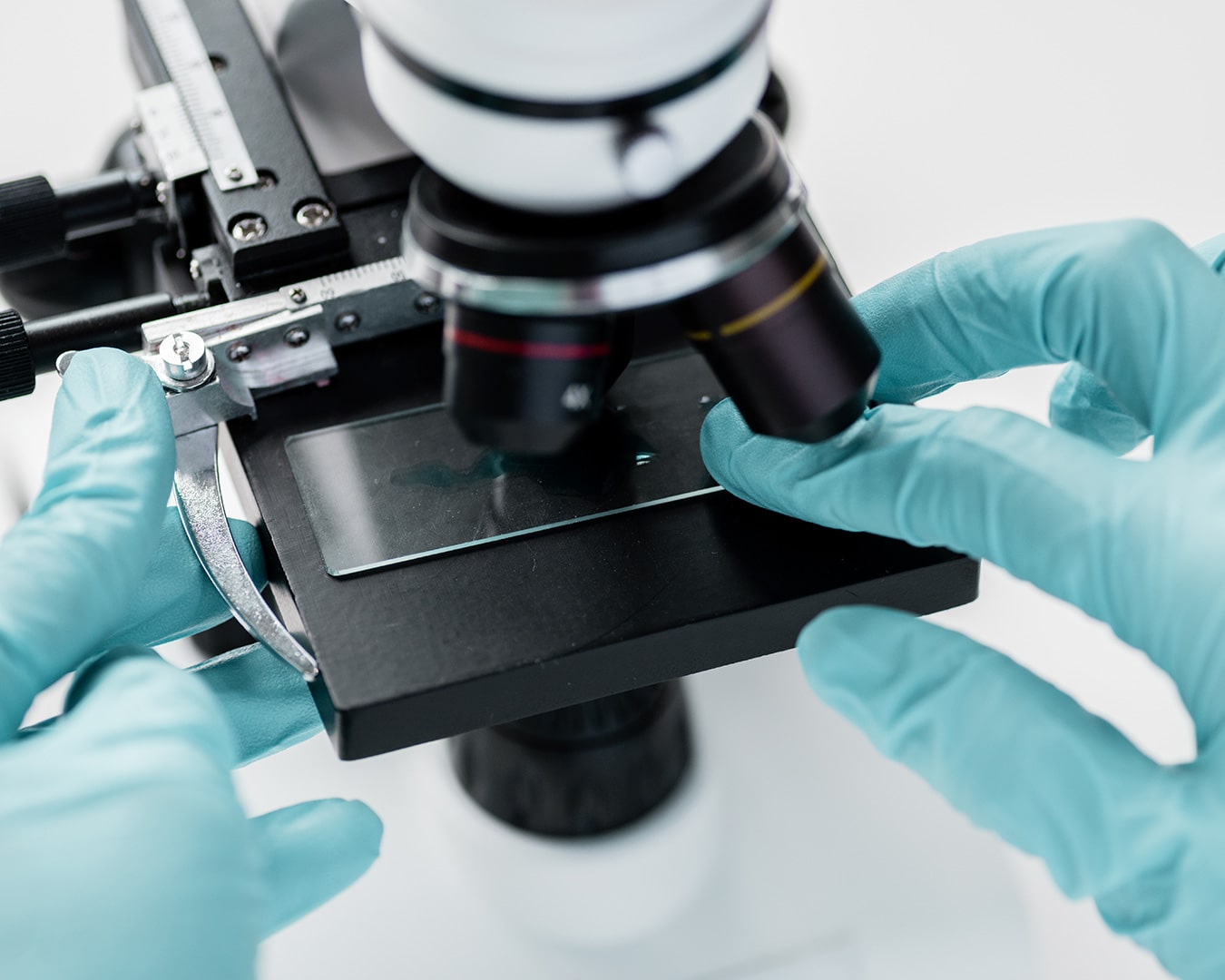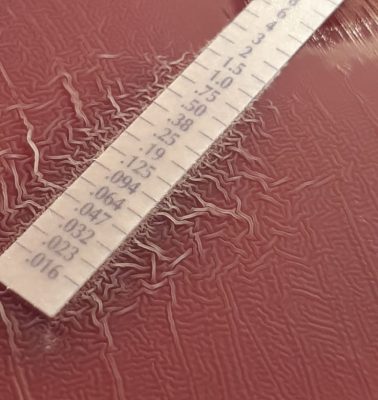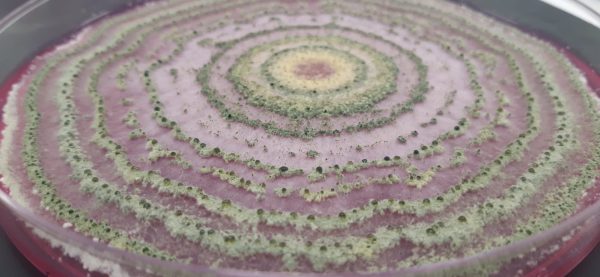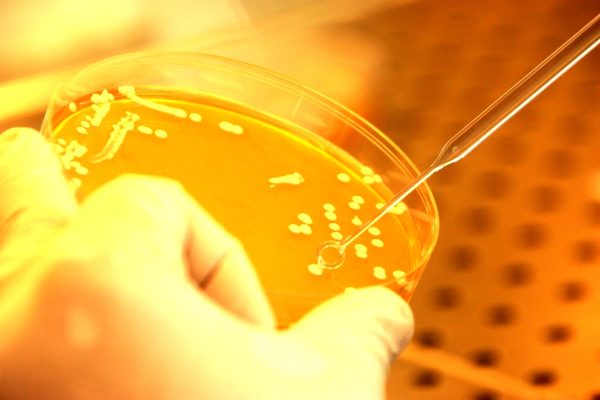Microbiology
Microbiological Unit works on a wide variety of product categories based on Microorganisms: Biopestides, Biocides, Biostimulants.

The BioTecnologie BT team has gained extensive experience in conducting various studies related to Biopesticides over the years. These studies encompass:
- Physical-chemical characterization
- Determination of active substance content
- Measurement of Colony Forming Units (CFU) or direct microscopic counts for viability determination
- Methods validation
They also include studies such as:
- Shelf life studies
- Cold Stability Testing (0°C) following CIPAC MT 39.3
- Accelerated Storage Stability per CIPAC MT 46.3
- Shelf Life evaluations at different temperatures
Additionally, the team conducts tests on treated seeds, including:
- Uniformity of distribution according to CIPAC MT175
- Adhesion to treated seed following CIPAC MT194
- Seed load assessments through CFU determination
Analysis of at least 5 batches, representative of production or pilot-scale, is carried out to determine the content of pure active substances, microbial contaminants, and pathogens.
Manufacturing processes may inadvertently introduce undesired microorganisms, including pathogens and associated toxins. Contaminant and pathogen search and quantification adhere to OECD No. 65 guidelines on microbial contaminant limits for microbial pest control.
The team also specializes in Residue determination, covering plants, plant products, foodstuffs, feedingstuffs, and environmental samples. They can develop analytical methods for residue detection, especially for formulations based on microorganisms. Method validation is routinely performed in matrices resulting from ecotoxicological studies.
Furthermore, the team conducts MIC (Minimum Inhibitory Concentration) determinations for antifungal and antimicrobial substances against yeasts, molds, and bacterial strains. This involves the agar diffusion method using strips test and the broth dilution method following EUCAST or CLSI guidelines. MIC is defined as the lowest concentration of an antimicrobial or antifungal agent that can inhibit visible growth in microorganisms, offering a quantitative estimate of susceptibility.
Quantification of Bacillus thuringiensis δ-endotoxins content is achieved through SDS PAGE and densitometric analysis. This test quantifies these endotoxins in technical powders, broths, and final concentrates from fermentation processes, utilizing electrophoretic separation of soluble proteins based on molecular weights.
Lastly, there are studies assessing the biological compatibility of microbial formulated products with other substances. The evaluation involves measuring Colony Forming Units (CFU) in different contact solutions compared to a control after one or more contact times.
STUDIES
- Determination of the Minimal Inhibitory Concentration (MIC):
Test stripes method
Microbroth dilutions method - Growth morphological characteristics and viability at different temperatures
- Fate and behaviour in soil and water
In vitro and in vivo efficacy test
- Evaluation of bactericidal activity
- Evaluation of fungicidal activity
- Evaluation of insecticidal activity
- Evaluation of biostimulant activity

REFERENCES AND GUIDELINES
Internal methods: US EPA OPPTS
EUCAST CLSI, Ctgb Part I: Micro- organisms.
STUDIES
- Analytical methods:
Set up and Validation of analytical methods for determination of the active ingredient by CFU count or/and direct microscopic counts and viability
- 5 Batch analysis:
Determination of active ingredient contaminants and metabolites

REFERENCES AND GUIDELINES
- SANCO/12830, PDA Technical Report N. 33, Ctgb Part I: Micro- organisms, Internal method
- SANCO/12116/2012, ISO for the single analysis of contaminants
STUDIES
- Analytical methods:
Set up and Validation of analytical methods for determination of the active ingredient by CFU count or/and direct microscopic counts and viability
- 5 Batch analysis:
Determination of active ingredient contaminants and metabolites
- Physical-chemical properties: all listed in analytical tests section
- Storage stability Studies at different temperatures determination:
All Physical-chemical properties listed in analytical tests section (Suspensibility by CFU methods)
Active ingredient content, Contaminants
- Compatibility test physical and/or biological
- Incompatibility test physical state

REFERENCES AND GUIDELINES
SANCO/12830, PDA Technical Report N. 33, Ctgb Part I: Micro- organisms Internal method
SANCO/12116/2012, ISO for the single analysis of contaminants
CRD, FAO manual, SANCO/10473/2003, US EPA OPPTS, CIPAC methods for the single analysis
OECD 85, CRD, FAO manual, SANCO/10473/2003, US EPA OPPTS, CIPAC methods for the single analysis, ISO methods for the single analysis of contaminants
OPPTS – internal method, ASTM
STUDIES
Seeds treatment by laboratory machine, Seed loading analysis by CFU count, Uniformity of distribution by colorimetric method and Adhesion tests by colorimetric method

REFERENCES AND GUIDELINES
CIPAC MT 175, CIPAC MT194
STUDIES
- Validation of analytical method for determination of the active ingredient in work solution
- Analytical phase of tests listed in the Aquatic and Terrestrial Ecotoxicological section

REFERENCES AND GUIDELINES
Report N. 33, Ctgb Part I: Micro- organisms, Internal method
Study finder
Scientific Contact
Simona Coranelli
E-mail: scoranelli@biotecnologiebt.it
Phone: +39 075 895 0045 – Ext. 236
Business Contact
Katy Lazzari
E-mail: klazzari@biotecnologiebt.it
Phone: +39 075 895 0045 – Ext. 246
Discover the other Expertise
Didn’t find what you are looking for? Send us a message!
Fill in the form with the required information (*).
Our team will be happy to provide all the necessary support with regard to your request.


 English
English Italian
Italian